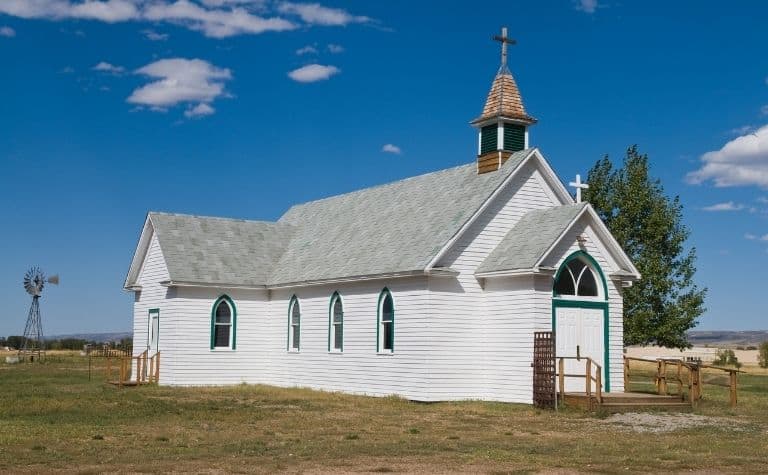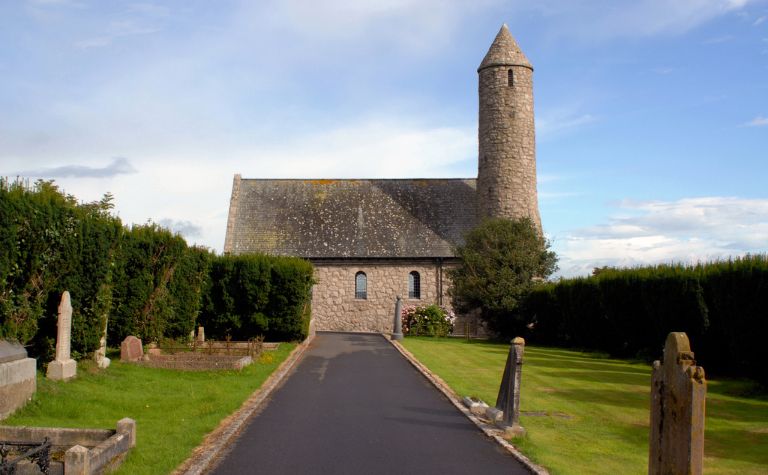Many people have heard of Episcopalian and Protestant churches but aren’t sure how they compare. These two prominent Christian traditions have many similarities, yet their differences can’t be ignored or minimized.
The Episcopalian tradition is partly Protestant and Roman Catholic as part of the Anglican Communion of denominations and churches. Protestantism separated from Catholicism during the 16th century. Its largest denominations include Baptist, Pentecostal, Lutheran, Presbyterian, and Methodist traditions.
Are Episcopalians Arminians or Calvinists? Who leads the Protestant church? How do these two traditions view the Trinity, the Bible, communion, and the end times? Keep reading to learn the answers to these questions and many others.
Also, see Episcopalian vs. Evangelical: What’s the Difference? to learn more.

Episcopalian and Protestant Christianity Compared
What’s the difference between the terms Episcopalian, Anglican, and Church of England? The “Church of England” refers to the Protestant branch of Christianity that King Henry VIII and others established in 16th-century England. “Anglican” comes from the Latin phrase ecclesia anglicana, meaning “English Church.”
The term “Episcopalian,” whether in reference to a church or a person, grew in use in America during the Revolutionary War because the “Church of England” had negative political connotations to many colonists.
| Episcopalianism | Protestantism | |
|---|---|---|
| Origin | The Anglican tradition dates to the time of King Henry VIII (1491-1547) and his protests against the Catholic church. Anglicanism arrived in America as soon as settlers arrived from England. The “Episcopalian” church dates to the time of the Revolutionary War (1775-1783). | 16th-century Europe, especially Germany, under the reforms of Martin Luther (1483-1546). Reform movements took root throughout Europe in different countries at this time. |
| Meaning of the name | From the Greek word for “overseer” and the Latin word for “bishop,” the term refers to a form of church government that locates ecclesiastical authority in the office of bishop as opposed to the papacy or congregational membership. The term also describes the largest tradition in the Anglican communion in America. | The word “Protestant” comes from the Latin word protestari, meaning “to bear witness.” The reformers were “protesting” certain doctrines and practices of the Catholic church. |
| Early influencers | King Edward VI (1537-1553), Queen Elizabeth I (1533-1603), theologian Richard Hooker (1554-1600) | Martin Luther, John Calvin of France (1509-1564), and Ulrich Zwingli of Switzerland (1484-1531) |
| Significant writing outside the Bible | Historically, the tradition has affirmed the Apostles and Nicene Creed; The Book of Common Prayer is also a pivotal document to the heart and identity of the tradition; The 39 Articles of Religion. | The Apostles Creed, the Nicene Creed; the writings and sermons of Martin Luther, especially the 95 Theses, Calvin’s The Institutes of the Christians Religion; many others |
| Episcopalianism | Protestantism | |
|---|---|---|
| Organization | “The Archbishop of Canterbury” is the senior bishop and principal leader of the Anglican Communion in England. Today, the English monarchy is only the ceremonial leader of the church in England. In America, “the Presiding Bishop” is the chief pastor of the Episcopalian Church. | Protestantism doesn’t have a single leader or governing body. Some denominations have episcopalian governments, but others employ presbyterian or congregational models. |
| Theology (more below) | The church ultimately moved away from early Calvinist influences to the dismay of the Puritans. It adopted a middle way between Catholicism and Protestantism. | Protestantism believes that Scripture alone, not ecclesiastical tradition, is authoritative for Christians and the church. It also emphasizes that sinners are saved by grace, through faith, and in Christ alone. |
| Theological and Social Worldview | It depends on the communion. The “Episcopal Church,” the largest communion in America, is socially and theologically liberal. | Protestants may be liberal or conservative theologically or socially. Many mainline denominations, especially in North America, have embraced liberal ideology in recent years. |
The Episcopalian tradition in America has different expressions in twenty-first-century America. The denomination called the “Episcopal Church” is the largest by a significant margin. Denominations and churches have split over theological, political, and social issues.
Examples of contentious topics include women in ministry, allegations of devaluing Scripture, and issues related to same-sex marriage and gender identification.
| Episcopal Denominations | Reported Membership |
|---|---|
| Episcopal Church | 2 million |
| Anglican Church in North America | 112,000 |
| Continuing Anglican Churches | 100,000 |
| Reformed Episcopal Church | 15,000 |
Also, see Episcopalian vs. Baptist: What’s the Difference? to learn more.

Episcopalian vs. Protestant Beliefs
What are the “high church” and “low church” Anglicanism and Episcopalianism? The high church wing emphasizes the tradition’s similarities to Catholicism and practices aspects of High Mass. The low church wing emphasizes the tradition’s similarities with Protestantism and its roots in the Reformation.
- Today, some Episcopalian congregations in America emphasize beliefs and practices that are considered Catholic.
- Other churches are aligned with conservative evangelical theology, some of which embrace charismatic expressions of worship and prayer.
- Still, other Episcopal churches have largely abandoned historic Catholicism and Protestantism and have adopted liberal and progressive social-political convictions and have less theological focus.
| Episcopalian | Protestantism | |
|---|---|---|
| View of the Bible | Traditionally, the “low church” (see below) has a high view of Scripture. The “high church” values Scripture plus ecclesiastical tradition. Critics charge the modern Episcopal church in America with abandoning Scripture’s teachings. | One of the hallmarks of the Protestant tradition is the authority of Scripture over and above church tradition. Protestants historically believe in the inspiration and authority of Scripture. |
| View of God | Episcopalians believe in the Trinity; there is one God who exists in three persons. The Father, Son, and Holy Spirit are each fully divine. | Protestants believe in the Trinity; there is one God who exists in three persons. The Father, Son, and Holy Spirit are each fully divine. |
| View of Christ | Jesus is the second person of the Trinity. He is God in human flesh. He is 100% God and 100% man. Jesus was born of a virgin, lived a sinless life, died as an atonement for sin, and was physically resurrected on the third day. | Jesus is the second person of the Trinity. He is God in human flesh. He is 100% God and 100% man. Jesus was born of a virgin, lived a sinless life, died as an atonement for sin, and was physically resurrected on the third day. |
| View of Salvation | Historical roots are closer to Calvinism than Arminianism. Today, liberal communions are ecumenical and inclusive of other religions. | Protestants believe that salvation is by grace through faith in Christ alone. Protestants can be Arminian, Calvinist, Baptist, or something else. |
| View of the Holy Spirit | The Holy Spirit is the third person of the Trinity. He is fully divine. Episcopalians are historically cessationists, yet some small communions practice charismatic worship (e.g., International Communion of the Charismatic Episcopal Church). | The Holy Spirit is the third person of the Trinity. He is fully divine. The Spirit applies the salvation that the Father planned and that the Son earned for sinners. He bestows spiritual gifts on believers that they are to use for the edification of the Church. Some Protestants are Pentecostal, and others aren’t. |

| Episcopalian | Protestantism | |
|---|---|---|
| View of the Ordinances | All Episcopalian expressions recognize baptism and the Lord’s Supper. Those who have convictions that align with the high church recognize the other five that Catholicism does. The Anglican-Episcopalian tradition teaches that the sacraments are a means of grace, as in Catholicism. | Protestants believe there are only two ordinances: the Lord’s Supper and baptism. There are only two because those are the only ones Christ taught. The others are creations of the church. |
| View of the Lord’s Supper | Christ is present in the Eucharist, but there is a mystery to it. The tradition doesn’t fully embrace Catholicism’s theology of the Eucharist but affirms that consuming the elements is more than simply a memorial practice. | Varies widely according to denomination, though none affirms the Catholic doctrine of transubstantiation. Baptists, Presbyterians, and Lutherans all have different theological beliefs about the bread and cup. |
| View of the Baptism | Clergy baptize infants and adults; baptized individuals are “grafted into the church.” | Generally, Protestants believe baptism identifies a person with the death and resurrection of Christ (Rom. 6:3-5) and obedience to Christ. It also signifies their inclusion into the church community (Acts 2:38-47). Protestants do not agree about who (children or adults) should be baptized and how (sprinkling or immersion). |
| View of the End Times | Episcopalians believe in the Second Coming of Christ. The tradition’s eschatology is Amillennial, as opposed to Premillennial or Postmillennial. | Protestants believe in the Second Coming of Christ, which is a core belief in the tradition. Protestant traditions may be Amillennial, Premillennial, or Postmillennial. |
Also, see Episcopalian vs. Christianity: What’s the Difference? to learn more.
Related Questions
Episcopalian and Baptist are two of the largest branches of the Christian faith in America, though churches belonging to each tradition can also be found around the world. Many people know that...
Many people have heard of the Episcopalian and Methodist denominations but don't know the differences and similarities between their respective churches. People may also be aware that both traditions...
